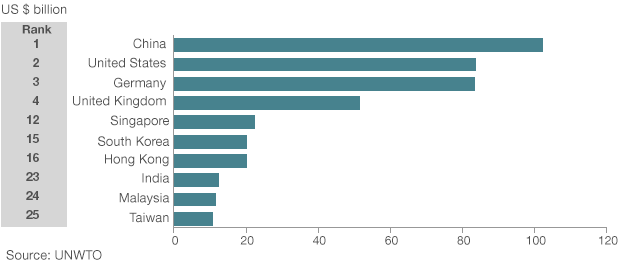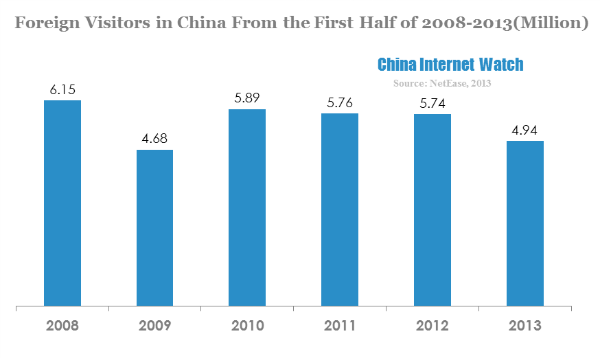A policy change that will enable U.S. and Chinese citizens to visit each other’s countries repeatedly within 10 years has been announced at the conference of world leaders in Beijing; and it has been already gone into effect. Business and short-term visit visas, which used to expire after one year, will be valid for 1o years and allow a larger number of population travel back and forth between the U.S. and China.
In 2013, 1.8-million Chinese visitors came to the United States and brought an estimated $21.1 billion to the economy. The Federal government predicts the economic impact of the loosened visa restrictions could be $85 billion by 2021, according a white house statement reported by the Los Angeles Times.
 Majority of the media coverages focused on the economic spur the incoming Chinese tourists may bring to the States. Nevertheless, few wrote about the other side of the story: the policy change will also have an effect on the U.S. citizens’ visa for China. The new 10-year visas available to US passport holders will make travel to China easier for those who qualify.
Majority of the media coverages focused on the economic spur the incoming Chinese tourists may bring to the States. Nevertheless, few wrote about the other side of the story: the policy change will also have an effect on the U.S. citizens’ visa for China. The new 10-year visas available to US passport holders will make travel to China easier for those who qualify.
A policy making process sometimes is the joint-consideration of both international relations and market demand. In the case of the 10-year valid visa, it seems like the policy shift may have something to do to with China’s inbound tourism industry. Unlike the large surplus on manufacturing, China’s tourism industry has been suffering deficit ever after 2009. The deficit pushed the local travel agencies and accommodation providers to price their service lower, sometimes even lower than the cost, to keep the business running.

It may not be just a stereotype for Chinese to picture the U.S. visitor as spenders. According to a report from BBC, the travellers from the United States were actually the No.2 travel spenders in Asia, closely followed by Germans.
At the same time, foreign tourists have slowed down their adventures in China. In the year of the 2008 Beijing Olympic Games, the number of the foreign tourists in China reached its peak at 6.15 million. Since then, the number has been shrinking, though it did bounce up a little bit in the year of 2010. The United States of America-China Chamber of Commerce (USCCC) said in a statement that the relatively high standards for L visas are one reason Beijing has seen declining tourism numbers. Programs such as 72-hour, visa-free travel to Beijing have not been sufficiently easy or welcome to make the city attractive as a destination.
The USCCC also clarified some requirements in order to obtain the new 10-year visa. In order to qualify for 10-year visas, US passport holders must have more than one-year validity remaining on their passport. And, each entry will only be good for 60 days.
“As international relations can change quickly without advanced notice, we urge you to take advantage of this new policy and apply for your China visa at your earliest convenience. In addition, if your passport expires in less than one year, we encourage you to consider renewing your passport,” said the USCCC in their website post.
It is uncertain, but worth expecting a growing number of tourists from the States coming to China for visits. As predicted by Huffington Post blogger Kathleen Peddicord, “the boom will bring more and more higher-end choices.”
However, according to Peddicord, “the biggest challenge to travel in this region is language”. It is normal that desk clerks in local small hotels, cab drivers, bus drivers, waiters, and sales speak no English at all. And it could remain a long-term challenge for the Chinese tourism industry to equip with the level of service to satisfy the international travellers.


Leave a Reply
You must be logged in to post a comment.